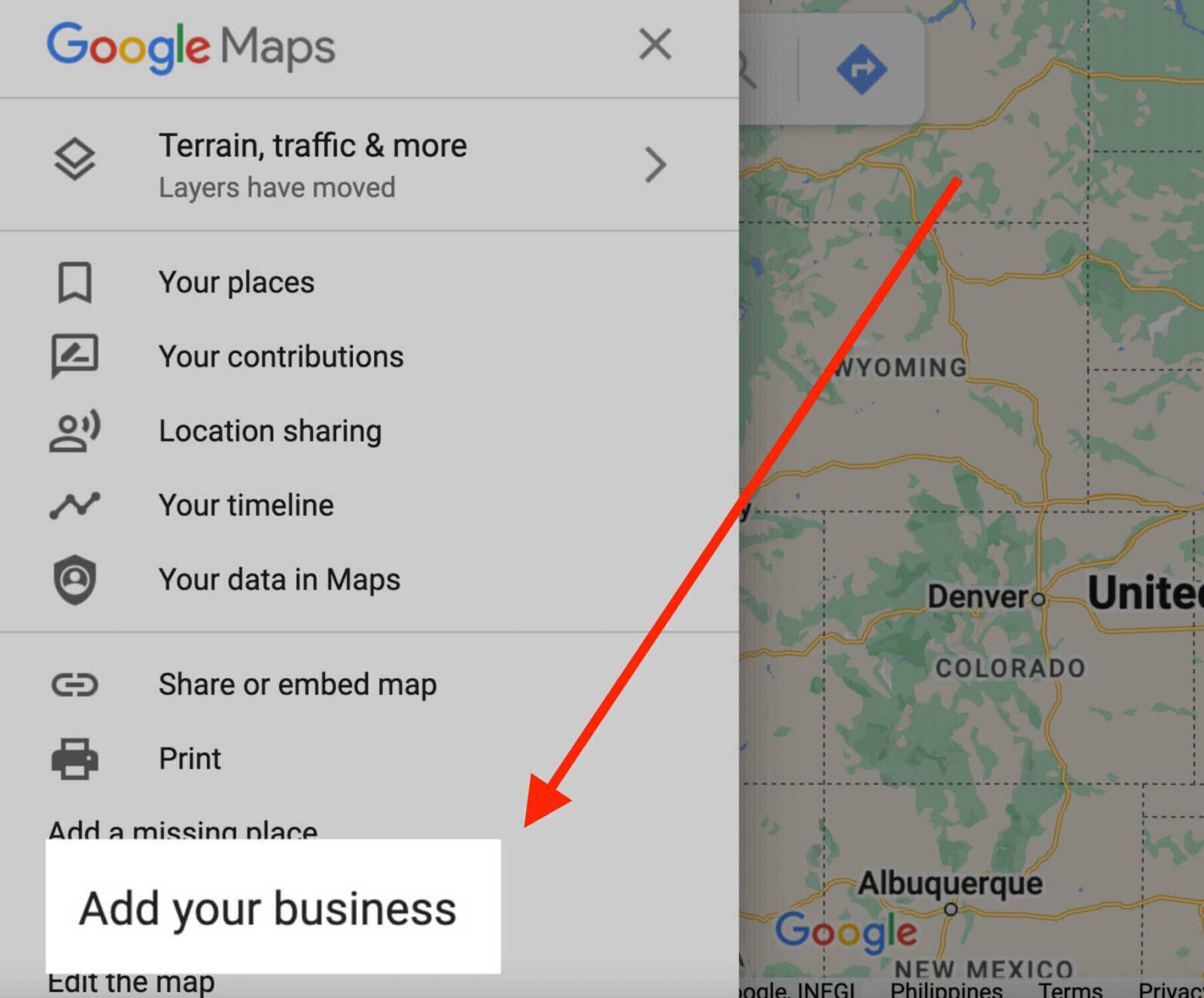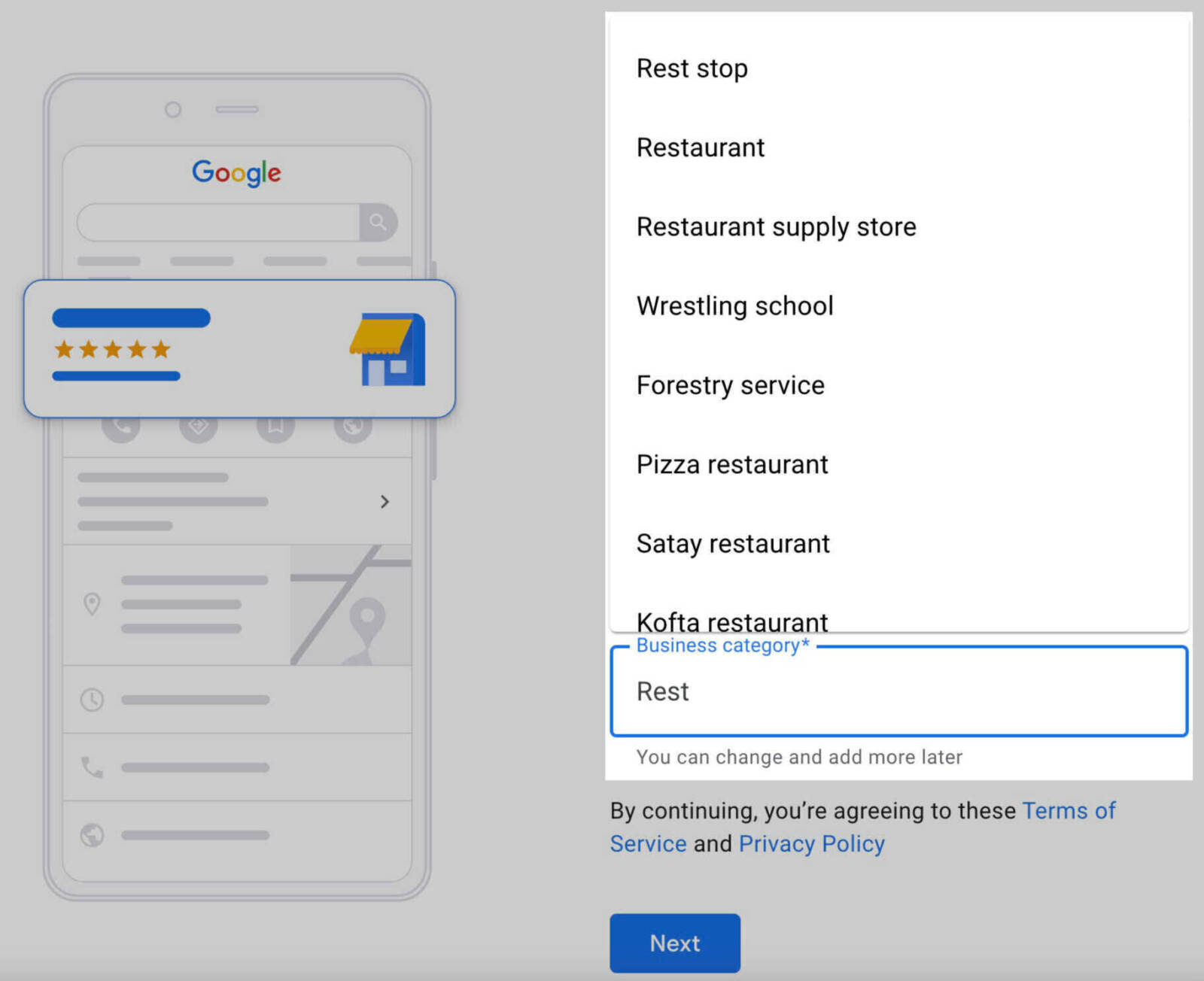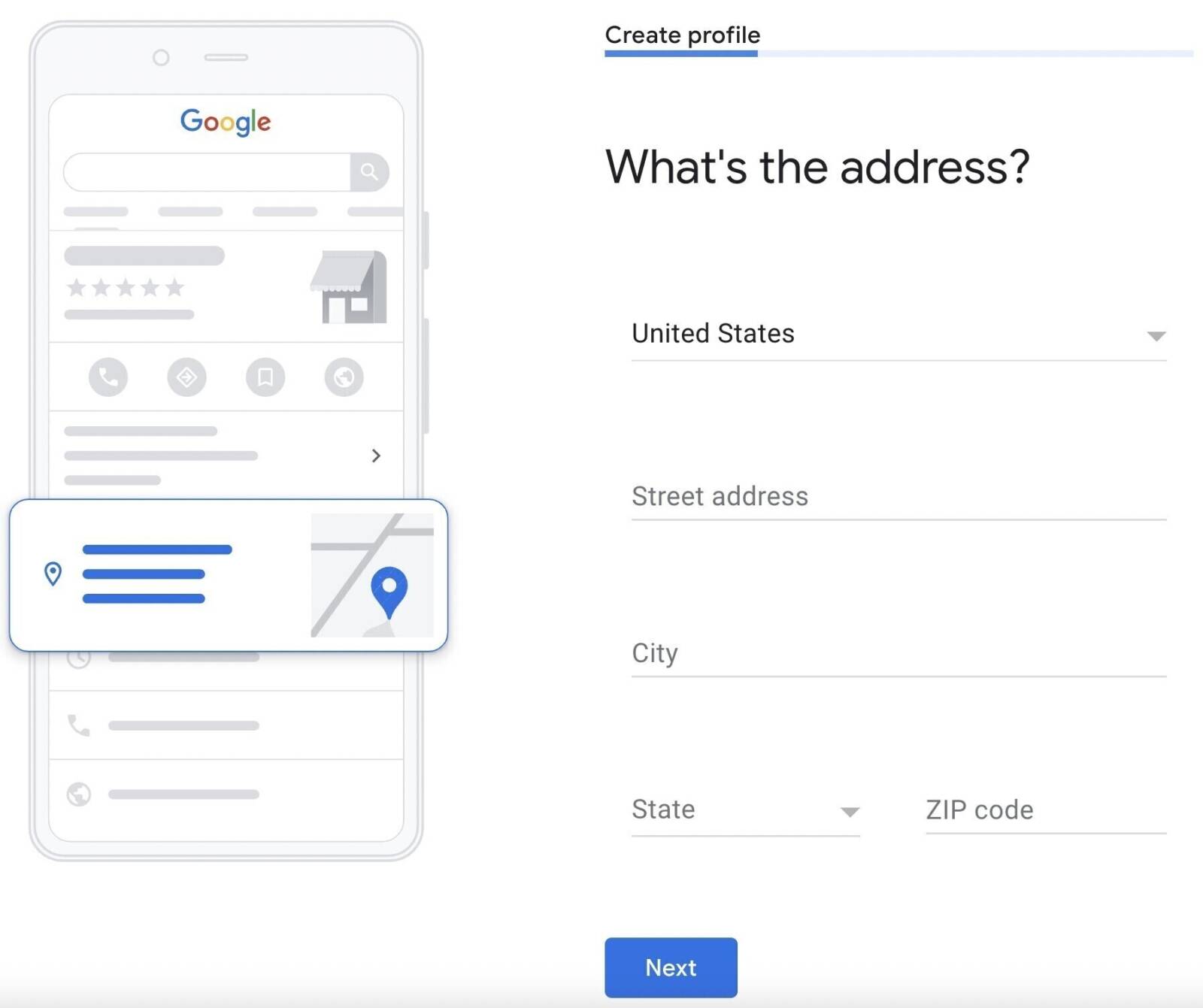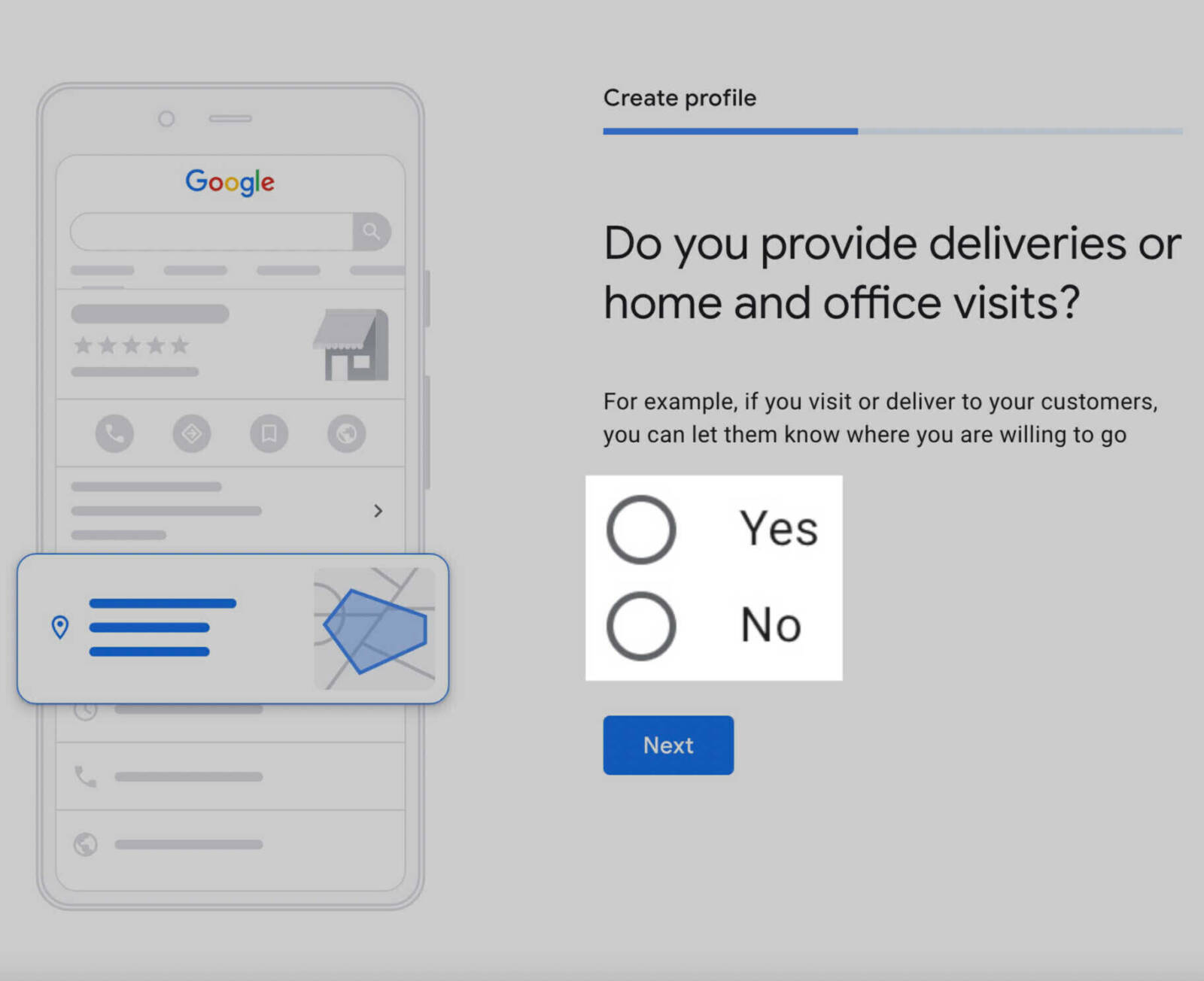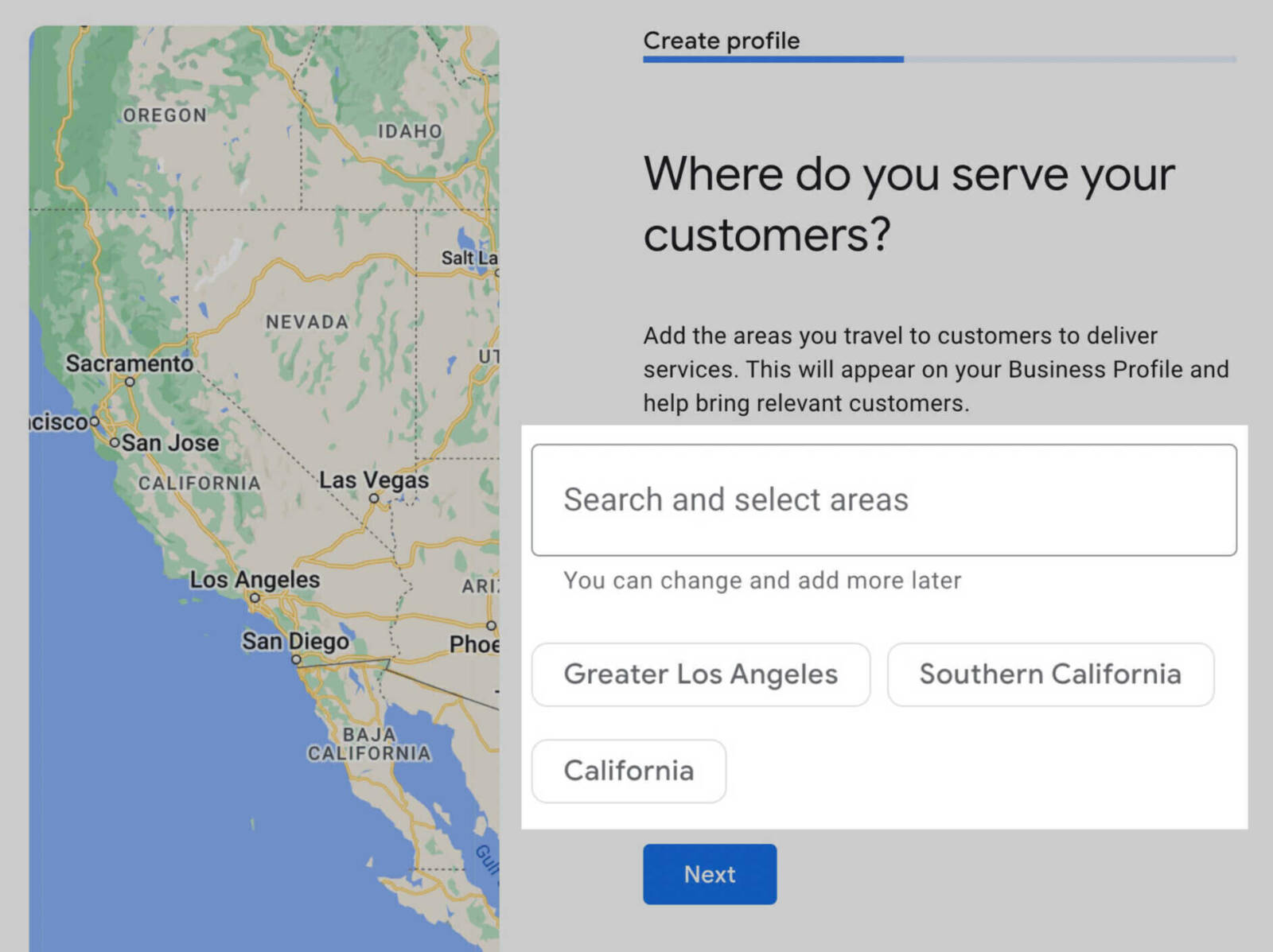“You have to act as if it were possible to radically transform the world. And you have to do it all the time.”
The Google Business Profile (GBP) is a powerful, often overlooked, strategic tool for cataloging businesses on the web. GBP benefits include driving up SEO, allowing faster response times to customer inquiries, and making it easy for customers to find your storefront. GBPs promote business branding across the platforms where it can be found.
Setting up a Google Business Profile merely takes a few minutes, and it’s easy to maintain. Once a Profile is live, the primary consideration is keeping its information up-to-date.
The de facto purpose of having a Google Business Profile is to make it as convenient as possible for customers to shop with a business, while the coveted aim among business owners is to be included in the top three search results – otherwise known as a local pack.
This article discusses:
- Why businesses should have a Google Business Profile (GBP)
- How to set up a Google Business Profile in eight quick steps
- How to optimize a Google Business Profile
- Frequently asked questions about GBPs
Google Business Profiles are free and advantageous for every business to have.
The GBP rundown
People want convenience, and with global tracking, it’s easy to locate what you’re looking for and determine the best option.
Google is like a phonebook for the 21st century where the catalog must be ordered by the contribution of the listings themselves. In many cases, businesses already appear in search results with messy, un-optimized profiles. The appearance of a business in profile contributes to its rankability.
Optimizing a Business Profile does not take a long time, though it is critical to maintaining a healthy rank in the results so more traffic is driven to a business.
Discovery searches
Discovery searches – searches denoting proximity to the user, such as “veterinarians near me” or “best Italian restaurants in Soho,” have skyrocketed 200% in recent years.
Discovery searches complement direct searches, which are searches navigated by users looking for a specific business.
Search ranking
75% of shoppers click on businesses they find on the first page of Google results.
Being quickly discoverable gives businesses considerable leverage over their competition.
When searching for a business by name or type, a GBP’s best result is its inclusion in a local pack.
Local packs are the grouping of the three highest-ranking Google search results. These top three search results are deemed most trustworthy and authentic to what the user is looking for. Local packs contain the NAP, a thumbnail representing the business, and its location pinned to a map where other companies may be pinned. More information on local packs can be found in Step 8.
Google identifies a manifold of benefits to first-page ranking search results.
- Visibility – First-page ranking businesses tend to be the only businesses shoppers engage
- Credibility – Internet traffic tends to trust businesses Google ranks highly
- Brand visibility – Brands ranking on the first page of results enjoy increased brand awareness
- Consumer engagement – Internet shoppers are more likely to interact with pages that rank highly on Google
- Higher click-through rates – The top three rankings – aka the local pack – capture the highest traffic
- User experience – Being more accessible to users is the first step in providing a great user experience for customers
- Higher conversion rates – High Google rankings tend to correspond with increased website conversion rates
Benefits of having a Google Business Profile
An up-to-date Google Business Profile adds credibility to businesses.
- Disclose services to potential customers
- Provide contact information
- Increase appeal by showing pictures of business, merchandise, or food
- Prove authenticity beyond reasonable doubt through customer reviews
Share business information with users. Everyone who shops online has an impression of a business from customer reviews. Reviews provide a quick way to assess whether or not a company is worth doing business with.
- Increase visibility – Appear on Google Search and Google Maps results. Businesses average 1,009 customer searches per month to their GBP
- Make contact information more accessible – Share hours of operation, phone number, address, and website
- Customer engagement – Post updates, share menus, and respond to reviews. Learn how customers find your business
- Maintaining NAP – Make adjustments to your business’s NAP (name, address, and phone number) by following insights gleaned from consumer activity
- Categorize – Improve your business’s niche by indicating your industry on your profile
- SEO – Improve SEO by providing visibility, engaging reviewers, and keywording your profile
Google Business Profile checklist
A Google Business Profile can be set up in eight steps and quickly optimized for Google Search and Maps. Here’s how to go about setting up and optimizing your business’s listing on Google.
Step 1: Add your business’s name to Google Maps
Navigate to Google Maps and add your business. Open the hamburger menu (three horizontal lines) by tapping on the top left of the screen.
Click “Add your business” in the menu.
A note on auto-completion
Google allows users to complete their business profile automatically; however, profiles that are not completed accurately will rank lower in search results. If you use automatic completion for your profile, review it to ensure all information is entered accurately. Manual completion is recommended to optimize Google Business Profiles.
Step 2: Create your business account
If your business already has an account, skip this step and move to Step 3.
To open an account, click the “Create account” button in the menu and choose: “To manage my business” from the drop-down menu.
Please fill out the fields asking for your business’s name and preferred username, create a password, and click “Next.”
Following this, the next step is to verify your phone number. Google will send the given phone number a verification code by text to complete the process. Copy and paste the code into the required field and tap “Verify.”
Upon verification, Google welcomes users and leads them to their terms and conditions page.
Finally, tap the “Agree” button on the terms and conditions page to start setting up your profile.
Google will provide you with some information about combining data and point out that you can control and change your account at any time. When you’re ready, click “agree,” and you’re done with Step 2.
Step 3: Fill out your business name and category
In Step 3, you will set up your Google Business Profile. The first step is to choose and enter your business’s name and category.
After you type your business name, Google will show you a list of existing businesses and their database.
Your business may not be on the list. If it is not on the list, skip to the next step to learn how to claim your business.
If your business is on the list, perform the following steps:
1. Type your business name exactly as it appears.
2. Don’t add keywords – Google may suspend an account for keyword stuffing. Keywords are added in the business description, which comes later.
3. Type your business category, then select the most accurate name from the list.
Why register your business name and category?
There are three good reasons to do it.
- Registering makes it convenient for customers to find your business
- Boost SEO efforts by ensuring your business is accurately described
- The entries are alterable: categories can be changed and added later
A note on keyword stuffing
Keyword stuffing is the practice of jamming a block of text with keywords to manipulate search engine rankings. In an earlier era of the Internet, keyword stuffing was thought to direct website traffic effectively. Today, overly keyworded pages are regarded as spam by web page audits.
Step 4: Add your location
If you have a physical location where shoppers can visit and make purchases, adding a location helps consumers find your storefront.
If you don’t have a physical storefront, skip this section
If you add a location, Google will ask for your location’s address. Make sure your information is accurate.
If you answer yes to Google’s prompt: “Do you want to add a location customers can visit, like a store or office?”
Accurately type in your business address.
When users locate your business on Google Maps, they can find your business address and get directions to it.
Enter your business address and click “Next.”
Google may offer you duplicate listings. One of the duplicated listings may be your address.
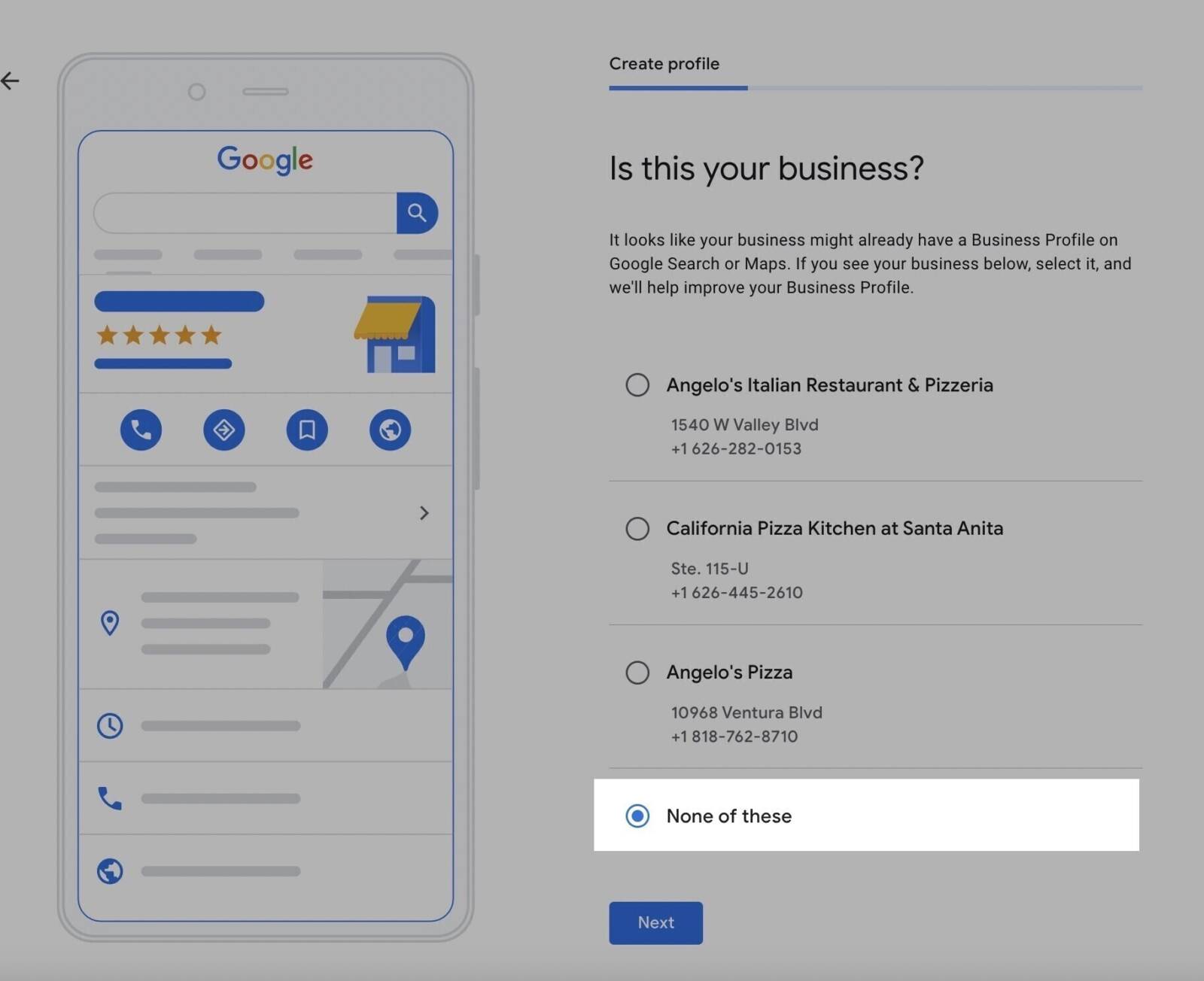 If a duplicate address matches your business, skip to the next step to claim your business.
If a duplicate address matches your business, skip to the next step to claim your business.
- If none of the addresses match your business, select “None of these”
Step 5: Listing your area of service
Make it easy for your prospects to locate the areas that your business services.
In Step 5, Google asks the user if you provide deliveries or home and office visits.
- Skip this step if you do not have a storefront
- Tap “Yes” to tell searchers where your business is located
- Select “Yes” to tell searchers what areas are within your reach of service
- Choose “No” to skip to the next step
Type the name of the area you serve. Once you start typing, look for the option to select your area from Google’s suggestions.
Step 6: Add contact information
The next step is to add your phone number and website URL.
Searchers will find and contact you using the contact information provided.
- Make sure the information you have entered is accurate.
Step 7: Opt in to updates and recommendations
In Step 7, Google asks if users would like their profiles to be opted into updates and recommendations.
If you want to stay current with what Google deems the best observances, opting in greatly increases the likelihood of sustained first-page results search rankings.
Step 8: Verifying a listing
Verification of your business makes your business searchable. It is possible to skip this step if desired. However, verification must be done at some point to legitimize listings.
Listings become verified in six ways:
- By call – Receive an automated phone from Google with a verification code
- By text – Receive a text from Google with a verification code
- By email – Receive an email from Google with a verification code
- By postcard – Receive a postcard from Google with a verification code
- Video recording – Record a video that proves your location to Google
- By live video call – Engage a Google support representative during a live call
For video recordings
Start recording from outside your business, capture other companies, street names and intersections, then seamlessly shoot walking inside your business. Capture any equipment or other details of your business in a continuous and unedited video stream lasting 50 to 90 seconds.
Google narrows the options for verification depending on the consistency of a storefront. If your business has a physical location, verification needs to happen by postcard.
- Choose a way to verify your business
Once you receive the postcard, enter the five-digit code provided when you log in to your account.
If your business does not have a physical location for customers to access, enter your address to verify.
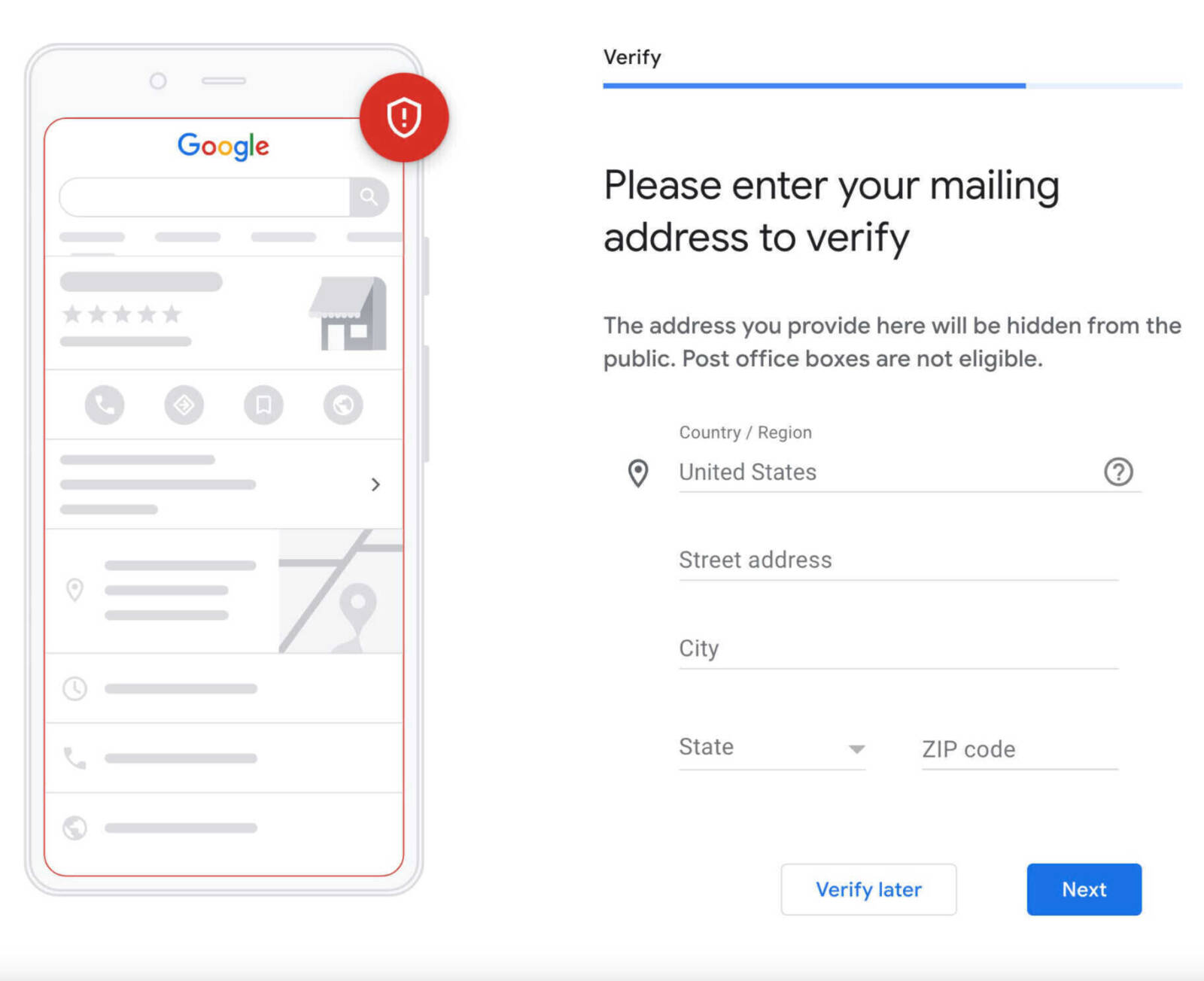 After entering your address, you can receive a phone call, text message, or verify through a video recording.
After entering your address, you can receive a phone call, text message, or verify through a video recording.
If you cannot verify your business, contact Google’s Business Profile support through their help center.
A note on local packs
Following search results for a business, Google will group three firms at the top of the search results, including an image of their store and a map of the three firms. This presentation is called a local pack.
Local packs include a map of their relevant area and a link to more places, which opens up Google Local Finder, a complete list of local businesses. Some of the known ranking factors for the local pack include the relevance of the business to the query. Relevance is determined by the company’s distance from the person searching.
Businesses that Google chooses to constitute a local pack have optimized their business profiles. There’s a picture, accurate address, accurate phone number, hours of operation, and metadata – grey unclickable text – highlighting service details such as “Showroom visits” or “Free consultations by appointment” for a kitchen and bath firm or “In-store shopping,” “In-store pickup,” or “Delivery” for a grocery store.
Ensure NAP Consistency Across the Web
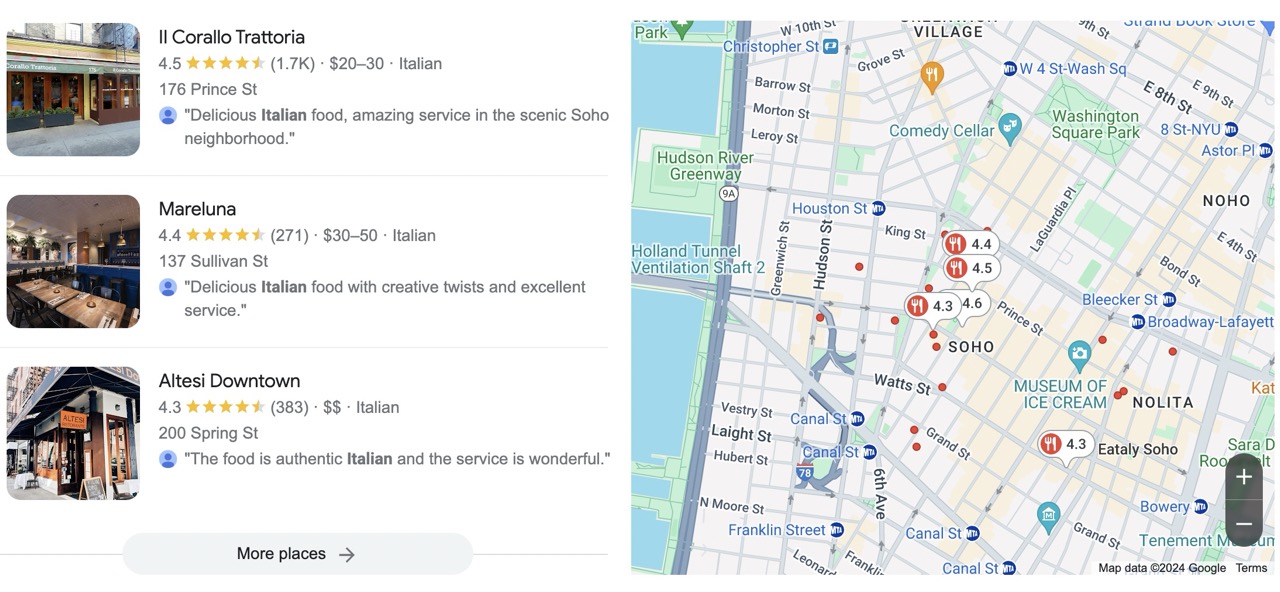 NAP is a triad of information: name, address, and phone number (NAP). To maintain user credibility, NAPs should consistently appear across every searchable result. That means businesses supply the same information in the same look across all business profiles, directories, social media, and websites.
NAP is a triad of information: name, address, and phone number (NAP). To maintain user credibility, NAPs should consistently appear across every searchable result. That means businesses supply the same information in the same look across all business profiles, directories, social media, and websites.
These details should be identical in every place they’re listed. NAP represents a business in a way similar to a logo. Brand consistency is critical to building trust. It conveys a sense of dependability, reliability, and capability to excel in its service.
Tips on how to ensure an excellent NAP:
1. Map the details.
Decide how your information will appear online.
Consider all of the details.
Will you write the word “street” in your address or use “St.”?
- Make decisions that code your NAP expression and keep them the same on every platform
2. Proofread the NAP.
Make sure that all of your information looks exactly how it should. To be sure that your mind doesn’t play tricks on you, read the words out loud.
3. Update the NAP on all platforms it appears.
Make sure your NAP is updated on every platform. Your website is your business’s home online, and the NAP used there should appear exactly the same everywhere else it appears.
4. Make sure to audit your NAP occasionally and update it as needed.
Optimize the My Business page on Google
The majority of your prospects will find your business using Google Search. If you want Google to trust your NAP, update your Google Business Profile page.
5. Add schema markup
Add schema markup – also known as structured data and local business schema – to your website.
What is schema markup?
Schema markup is code that allows search engines to understand a business and properly categorize it. It may include an NAP, hours of operation, and other relevant information.
Select the proper service categories
Make sure your firm’s products and services are aptly representative and represented.
Complete the “from the business” description
Google recommends optimizing its business profile to improve its search results ranking. A few guidelines must be followed to make this simple operation work for your company.
Relevancy is a top priority
Google specifications call for a maximum use of 750 characters, with key information about the subject frontloaded into the first 250 characters.
- Google recommends utilizing all 750 characters
- Keep the language consistent by drawing from your “About Us” page or mission statement
- Language consistency refers to both keywords and the way businesses and services are described
- Use keywords your audience uses to find business in your industry
- Don’t repeat any information already visible in the other sections of your profile.
- Discuss what sets your business apart from competitors and what customers like most about your business
- Do not include links or HTML
Google will give users a list of attributes you can check off to describe your business further. Attributes are unique features that potential customers seek out, like “showroom on-site” or “free consultation” and “receive a budget estimate in two hours.”
Blogging relevancy to Google Business Profiles
Blogging often increases reader traffic to a website. Active blogs are a way to show Google the health and relevancy of a business to be competitive with your competition and to resonate with a higher appeal to your followers and prospective readers.
Post quality is also a factor. Google reads content on its website to market for authenticity or spam labeling. Google wants to see that businesses are reflecting their niche in their blog. It will help you understand that relevant words to a business or service are used superficially, avoided, saturated into a text, or deftly used. When topics are covered and keywords are used skillfully, a website increases its domain authority. This is another underlying factor contributing to overall SEO by supporting SEO practices of Google Business Profile optimization.
Benefits of blogging:
- Increases traffic to your website
- Regular quality posting increases the number of positive ranking signals Google receives from a business
- Users are more likely to engage with a blog on Google than they are on another posting platform such as Instagram and LinkedIn
Upload photos to your GBP
There are two crucial aspects to consider regarding photos.
- Use high-quality photos. Do not skimp on quality. Nobody wants to see badly framed photos, poor resolution, or pixelation
- Include people in your photos. Readers are attracted to companies that promote their personnel, so pictures of personnel are highly valued in profiles.
Other important considerations:
- Add new photos often
- Add captions and geo-tagging
- Add new photos regularly
- Upload videos
Abiding by these critical aspects will help you optimize your Google Business Profile.
Share videos from a YouTube channel
Videos shared from a YouTube channel are the only way to post videos on GBP. Posting videos will send another signal in the algorithm if a YouTube video is getting views because of GBP posts. This will count as video views on the YouTube profile.
Seed your FAQs section
Seed your FAQs section with answers to commonly asked questions about your products and services.
A thorough approach starts by answering questions customers have asked your firm in the past and then expanding on that list by asking questions you think forthcoming customers will want answers to. Asking your team about their experiences with customers and prospects can create a comprehensive FAQ section.
For instance, the kitchen and bath industry has many complex components, such as the homeowner deciding which cabinet firm to select and then selecting a model from that firm’s cabinetry lines. There is also the task of scheduling the talent involved in the installation process so they can come together in a given period to work in tandem to complete the installation.
Seed your Q&A section
Optimization kicks off your profile by formatting the presentation so it is consistent across platforms. Keep the Q&A information current and loaded with as much relevant information on your business as possible.
To continue this procedure in the Q&A section of your profile, list the most frequently asked questions your business may get, and then answer those questions and vote for your answer in your profile.
This may seem like an artificial task that could be penalized, but it shows dedication to optimizing your profile and is encouraged by Google.
- Make a list of the most frequently asked questions your business gets
- Answer and upvote your answer on your profile
- Pepper your questions and answers with keywords
- Remain in line with your keyword strategy
- Use keywords naturally, avoid keyword stuffing
Keyword-stuffing content is similar to spamming content. Google wants to see high-quality content relevant to the business and will respond to high-quality content by placing it higher in the search results. In contrast, spamming content is repeatedly posting unwanted, poorly written content.
Get Reviews
Create a strategy for getting reviews.
Populating your review section with high-quality reviews requires a touch of strategy.
Review sections are ideally populated with honest, thoughtful reviews that critique or praise a business intelligently and realistically and convey the experience to drive traffic up for that business. In contrast, one-dimensional expressions that are saccharine with praise will turn off readers who value customer reviews and may cause Google to downrank a profile because it reads like spam content.
User reviews are valuable to readers when they are genuine and express why an experience was good or bad. Many times, a bad experience has a multifaceted reason that conveys the merits of a company despite the customer’s negative experience.
On the other hand, good experiences:
- Build your review section with honest reviews
- Aim for quality over quantity
- Negative reviews can be just as positively impactful to readers as positive reviews
- A mix of reviews conveys to Google an honest consumer experience
- Google bots are excellent spies for spotting false reviews
Interacting with customers is the next most important thing in supporting your reviews page. An active, dynamic customer reviews page will resonate better with new readers than a static, unanswered page of reviews.
- Respond to negative experiences and reviews within 24 hours
- Thank reviewers who leave negative reviews of your company for their insight in helping you make improvements
- Thank reviewers who have left positive reviews
Events, promotions, and offers
Creating a Google Business Profile helps consumers find businesses. The guidelines for setting up a successful profile are straightforward and essentially constitute three tasks:
- Commit to the process of generating a Google Business Profile
- Accurately enter all of the information Google asks for
- Update your Business Profile per Google suggestions or changes to your business relevant to the consumer
—SEN Design Group
Our business coaching helps design firm owners reach their revenue goals.
Contact SEN to master strategic planning, sell more products for every job, leverage industry-specific tech developments, Good-Better-Best selling, and other smart kitchen and bath design solutions.
Sign up for one of SEN University’s esteemed in-person schools and online business courses.
All images in this article used courtesy of SEMRush except where otherwise noted.



